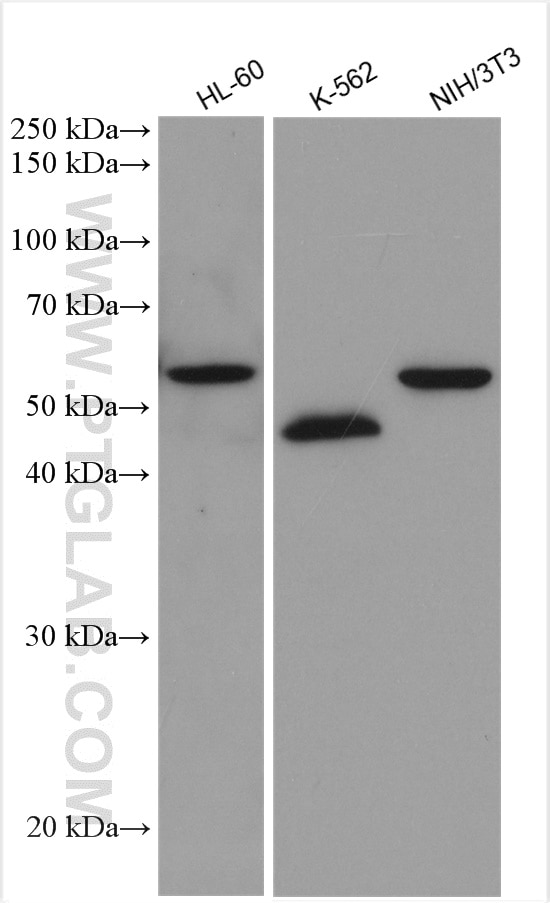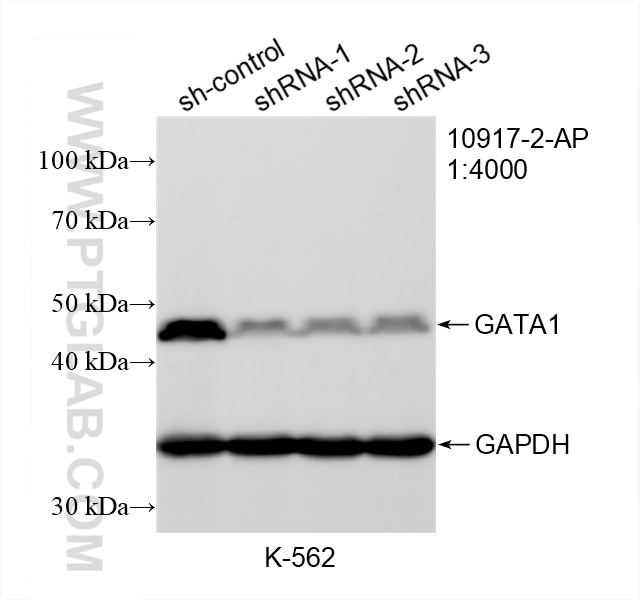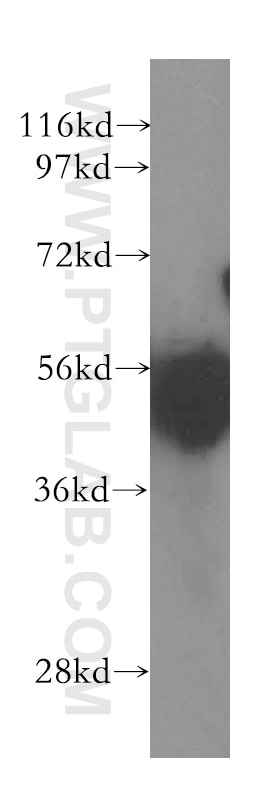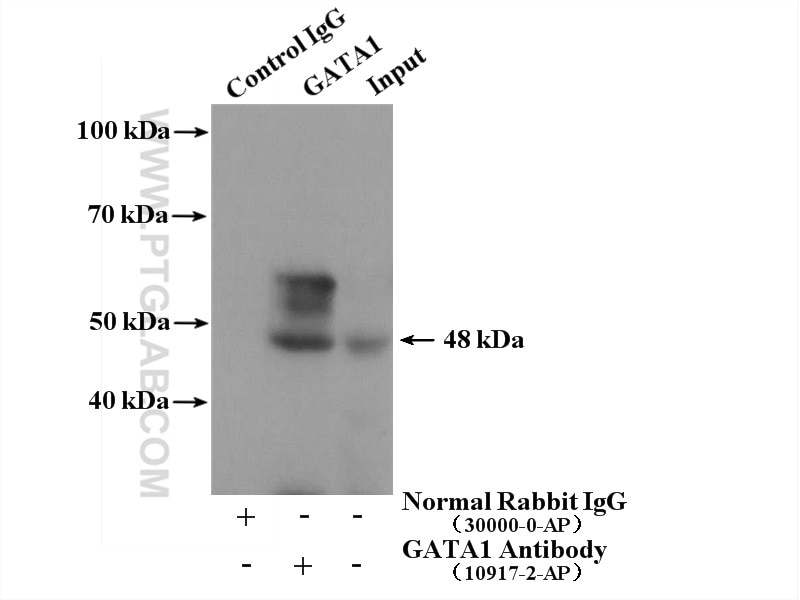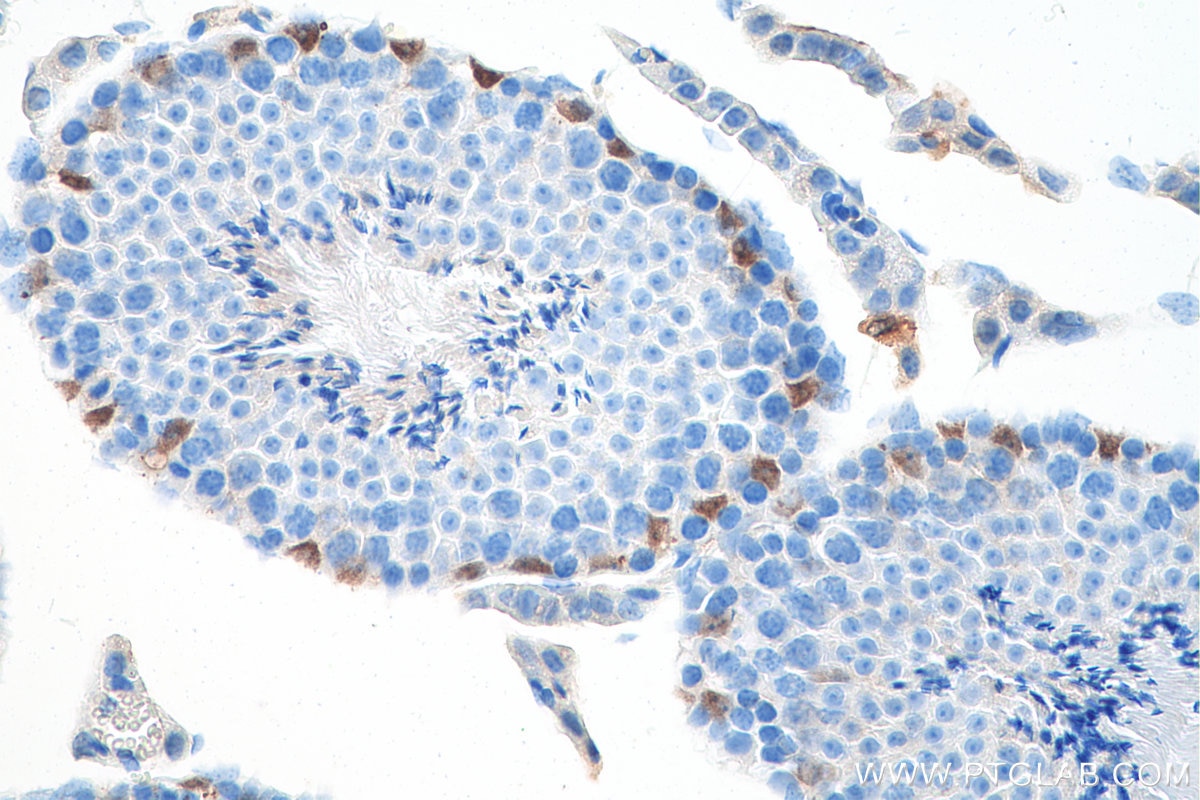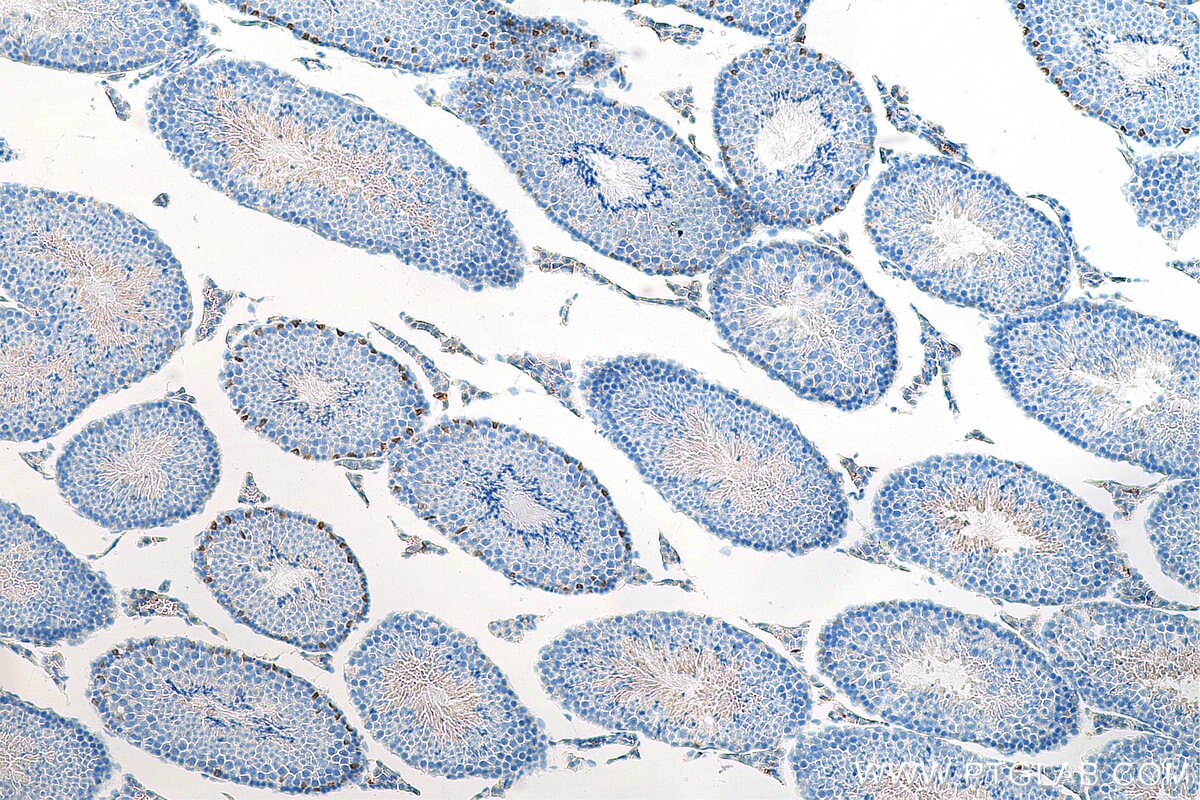- Featured Product
- KD/KO Validated
GATA1 Polyklonaler Antikörper
GATA1 Polyklonal Antikörper für WB, IP, IHC, ELISA
Wirt / Isotyp
Kaninchen / IgG
Getestete Reaktivität
human, Maus
Anwendung
WB, IP, IF, IHC, ChIP, ELISA
Konjugation
Unkonjugiert
Kat-Nr. : 10917-2-AP
Synonyme
Galerie der Validierungsdaten
Geprüfte Anwendungen
| Erfolgreiche Detektion in WB | HL-60-Zellen, K-562-Zellen, NIH/3T3-Zellen, Raji-Zellen |
| Erfolgreiche IP | K-562-Zellen |
| Erfolgreiche Detektion in IHC | Maushodengewebe Hinweis: Antigendemaskierung mit TE-Puffer pH 9,0 empfohlen. (*) Wahlweise kann die Antigendemaskierung auch mit Citratpuffer pH 6,0 erfolgen. |
Empfohlene Verdünnung
| Anwendung | Verdünnung |
|---|---|
| Western Blot (WB) | WB : 1:1000-1:6000 |
| Immunpräzipitation (IP) | IP : 0.5-4.0 ug for 1.0-3.0 mg of total protein lysate |
| Immunhistochemie (IHC) | IHC : 1:50-1:500 |
| It is recommended that this reagent should be titrated in each testing system to obtain optimal results. | |
| Sample-dependent, check data in validation data gallery | |
Veröffentlichte Anwendungen
| KD/KO | See 2 publications below |
| WB | See 7 publications below |
| IHC | See 5 publications below |
| IF | See 1 publications below |
| ChIP | See 1 publications below |
Produktinformation
10917-2-AP bindet in WB, IP, IF, IHC, ChIP, ELISA GATA1 und zeigt Reaktivität mit human, Maus
| Getestete Reaktivität | human, Maus |
| In Publikationen genannte Reaktivität | human, Maus |
| Wirt / Isotyp | Kaninchen / IgG |
| Klonalität | Polyklonal |
| Typ | Antikörper |
| Immunogen | GATA1 fusion protein Ag1350 |
| Vollständiger Name | GATA binding protein 1 (globin transcription factor 1) |
| Berechnetes Molekulargewicht | 43 kDa |
| Beobachtetes Molekulargewicht | 50-55 kDa, 40-45 kDa |
| GenBank-Zugangsnummer | BC009797 |
| Gene symbol | GATA1 |
| Gene ID (NCBI) | 2623 |
| Konjugation | Unkonjugiert |
| Form | Liquid |
| Reinigungsmethode | Antigen-Affinitätsreinigung |
| Lagerungspuffer | PBS mit 0.02% Natriumazid und 50% Glycerin pH 7.3. |
| Lagerungsbedingungen | Bei -20°C lagern. Nach dem Versand ein Jahr lang stabil Aliquotieren ist bei -20oC Lagerung nicht notwendig. 20ul Größen enthalten 0,1% BSA. |
Hintergrundinformationen
GATA1 is first identified as a member of the GATA transcription factor family, whose members bind the consensus (WGATAR) binding motif [PMID:22937757]. GATA1, a zinc finger DNA-binding transcription factor, plays a critical role in the normal development of hematopoietic cell lineages. The protein contains an N-terminal region that confers transcriptional activity and a C-terminal domain that mediates binding to DNA and other factors [PMID: 8524811]. GATA-1 is also implicated in regulating the expression of the erythroid and megakaryocytic-specific genes [PMID:22937757]. GATA1 exists two isoform with the molecular weight 50-55 kDa and 40-45 kDa (PMID: 31189107 ).
Protokolle
| Produktspezifische Protokolle | |
|---|---|
| WB protocol for GATA1 antibody 10917-2-AP | Protokoll herunterladen |
| IHC protocol for GATA1 antibody 10917-2-AP | Protokoll herunterladen |
| IP protocol for GATA1 antibody 10917-2-AP | Protokoll herunterladen |
| Standard-Protokolle | |
|---|---|
| Klicken Sie hier, um unsere Standardprotokolle anzuzeigen |
Publikationen
| Species | Application | Title |
|---|---|---|
Theranostics Differential effect of cancer-associated fibroblast-derived extracellular vesicles on cisplatin resistance in oral squamous cell carcinoma via miR-876-3p
| ||
Oncogene microRNA-23a, -27a and -24 synergistically regulate JAK1/Stat3 cascade and serve as novel therapeutic targets in human acute erythroid leukemia. | ||
Front Immunol FLI1 Induces Megakaryopoiesis Gene Expression Through WAS/WIP-Dependent and Independent Mechanisms; Implications for Wiskott-Aldrich Syndrome. | ||
Genes (Basel) Proof of Gene Doping in a Mouse Model with a Human Erythropoietin Gene Transferred Using an Adenoviral Vector. | ||
Oncotarget The transcription factor GATA1 and the histone methyltransferase SET7 interact to promote VEGF-mediated angiogenesis and tumor growth and predict clinical outcome of breast cancer. | ||
Eur J Pharmacol Alnustone promotes megakaryocyte differentiation and platelet production via the interleukin-17A/interleukin-17A receptor/Src/RAC1/MEK/ERK signaling pathway |
